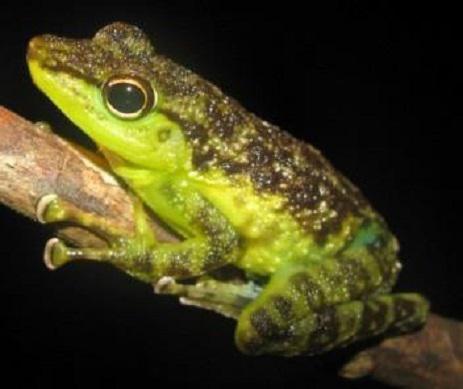Umilaela
This study aimed to assess environmental health through frogs’ diversity in Karimata island.

Limnonectes malesianus.
Karimata Island, West Kalimantan, Indonesia, is home to several endemics animal and plant species, in certainty for two endemic primate subspecies, the maroon leaf monkey, Presbytis rubicunda carimatae, and long-tailed macaque, Macaca fascicularis carimatensis. Unfortunately, there is little current information on the status, distribution, natural biology, and conservation of those subspecies. The most recent study by Yanuar et al. (1993) stated that habitat disruption caused by human activities in Karimata has had little effect on the primates to date. However, the continuing pressures on the land pose a threat to primate habitat.

Staurois guttatus.
According to those reasons, it is badly needed to conduct environmental assessment in this island. Frog study is such way for environmental assessment as its function as a bio-indicator for environmental health is now considered as one of the most sensitive organism, but information about herpetofauna of this relatively big island is virtually lacking. Methods for frogs’ collection will be obtained using standard methods (Simmons, 1987; Heyer et al., 1994). Sampling sites of this study will be focused most habitats found in this island. The diversity of frogs in these habitats will be used to measure its environmental health. Furthermore, we expect to obtain first-hand knowledge on other group of organism such as reptiles, crustaceans and fishes that inhabit the freshwater ecosystem.